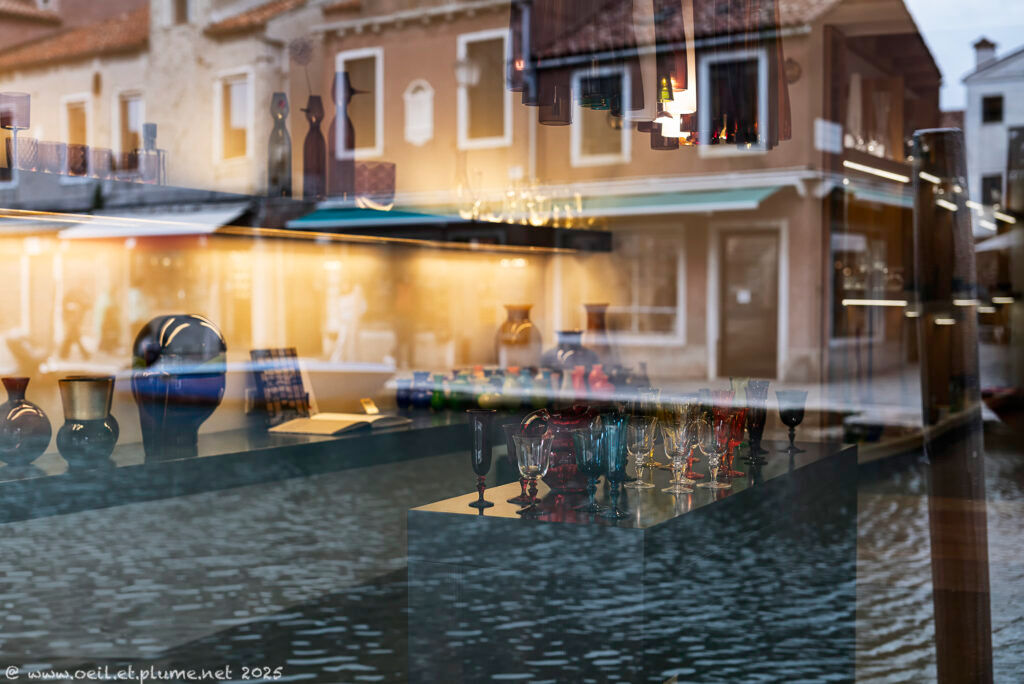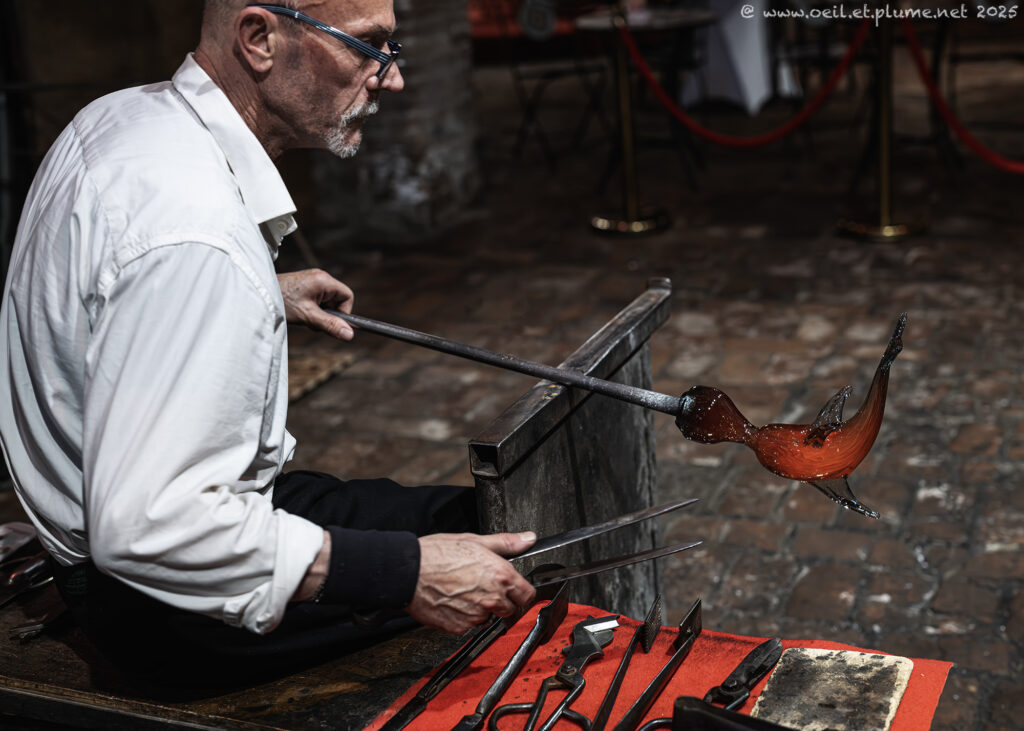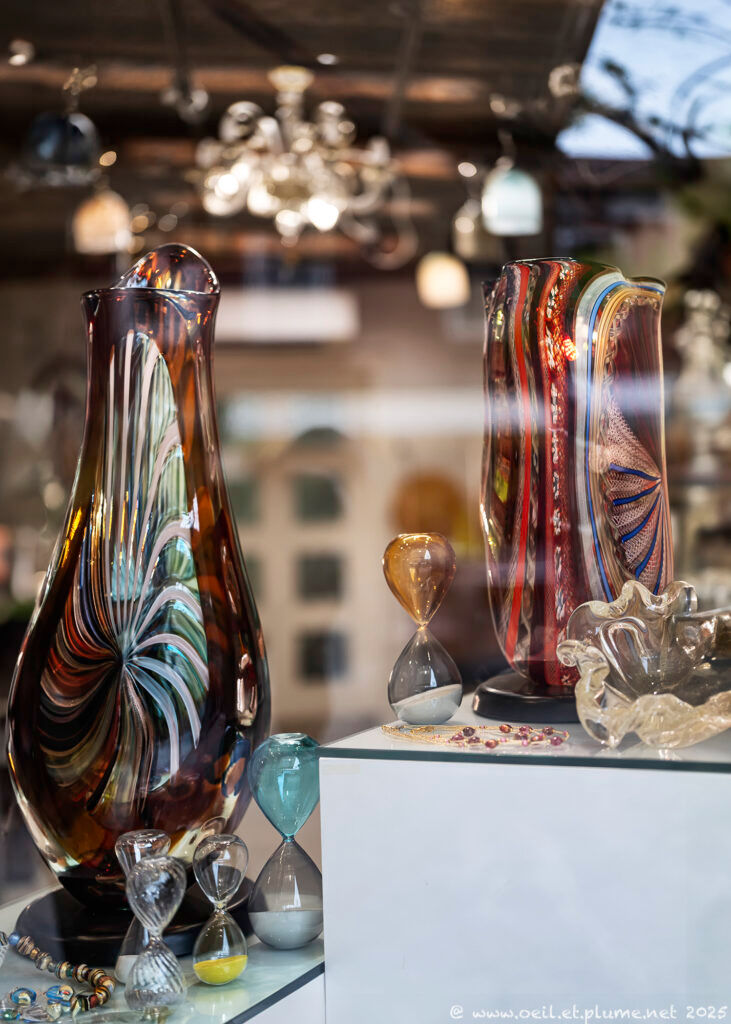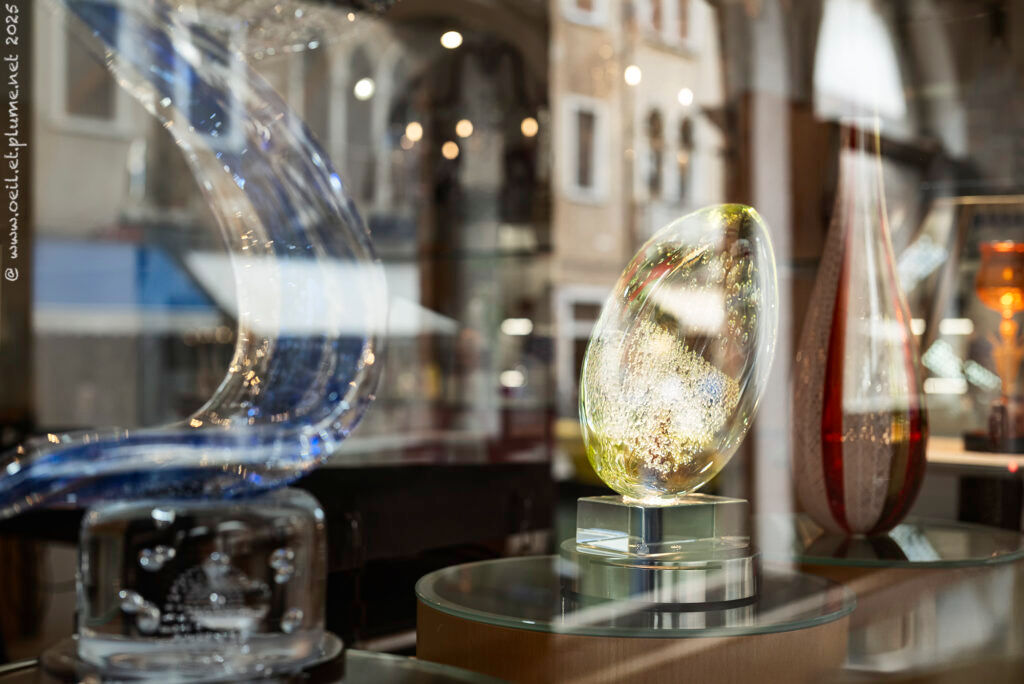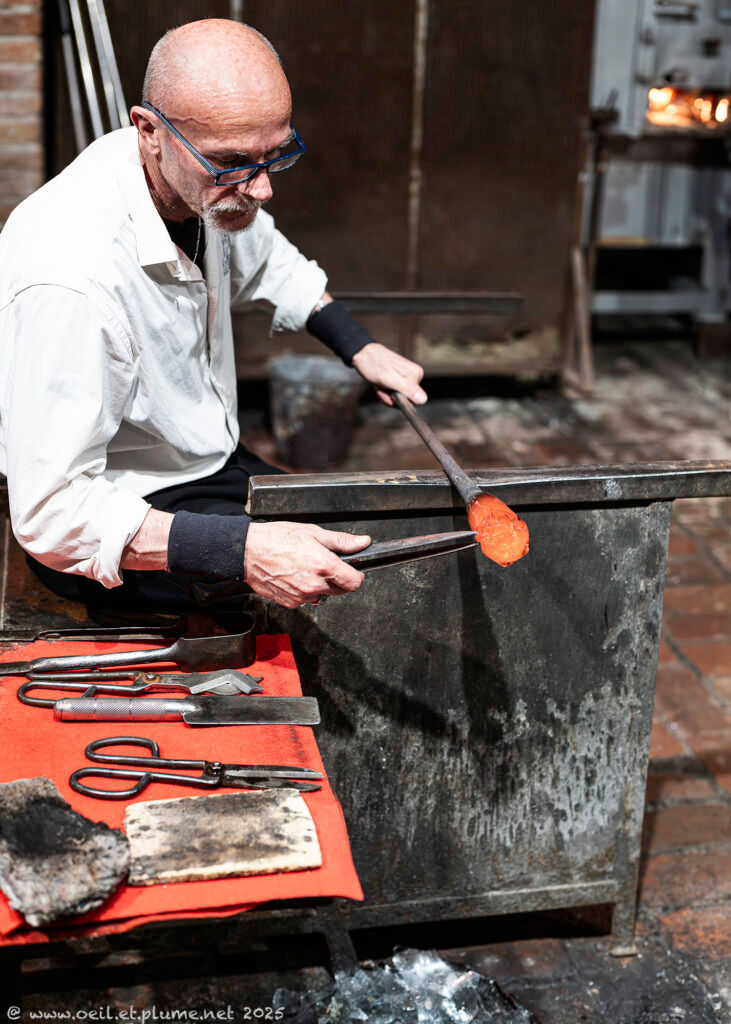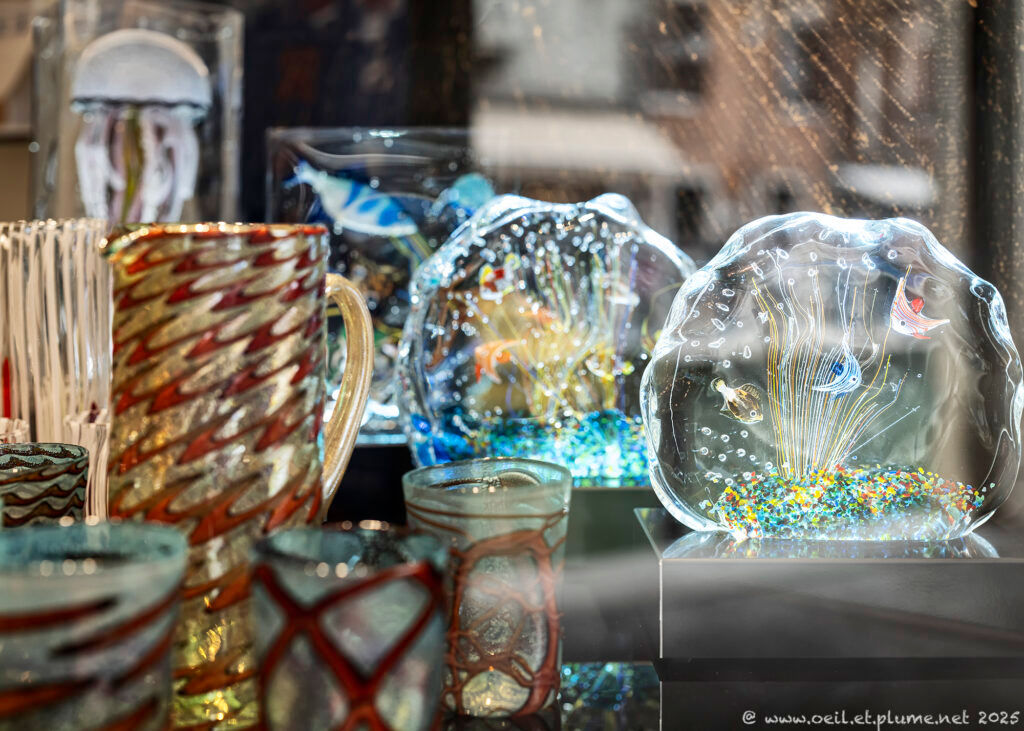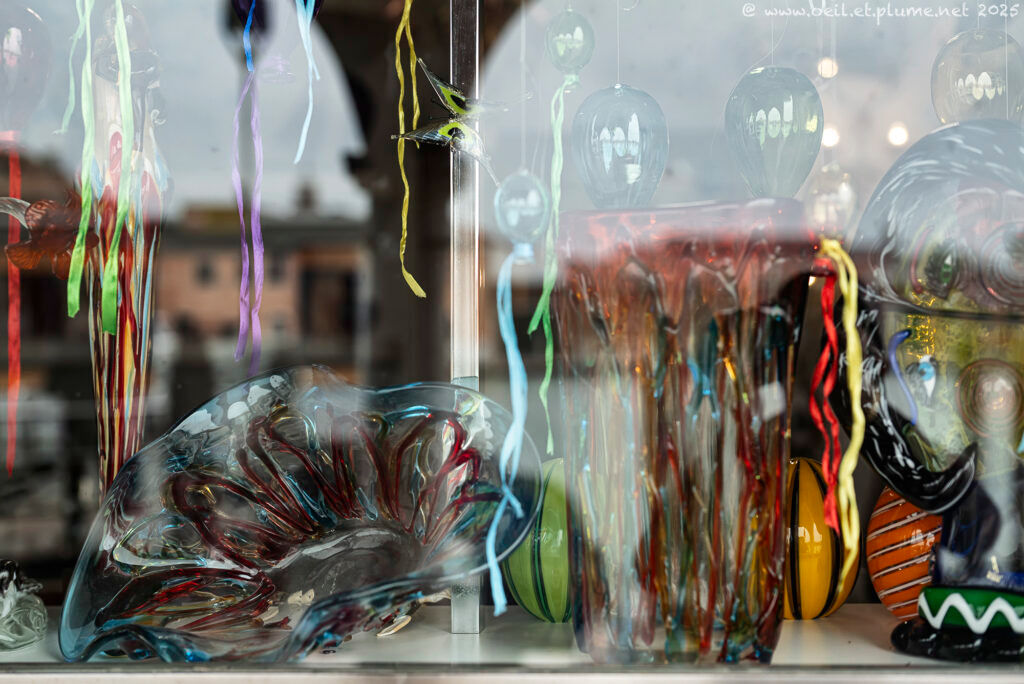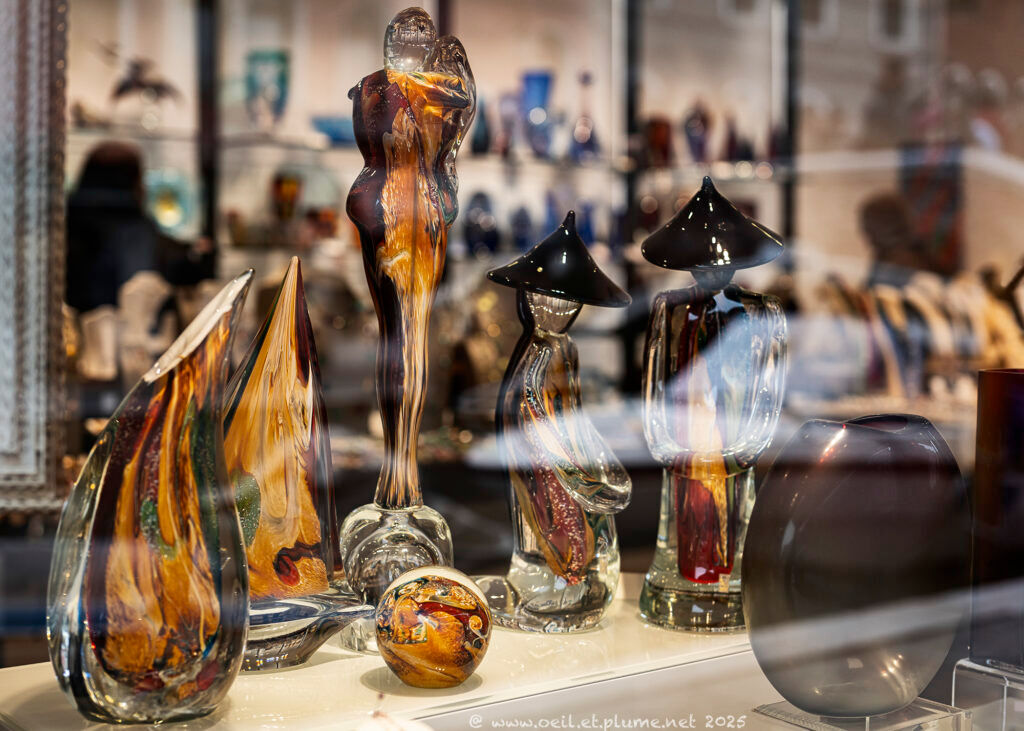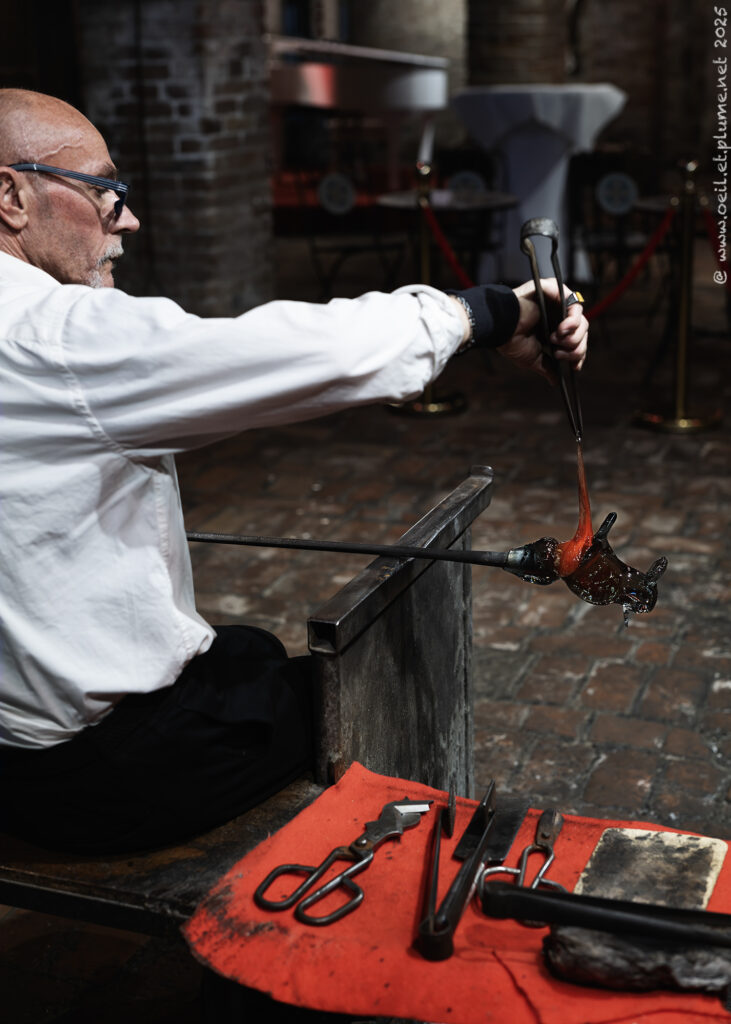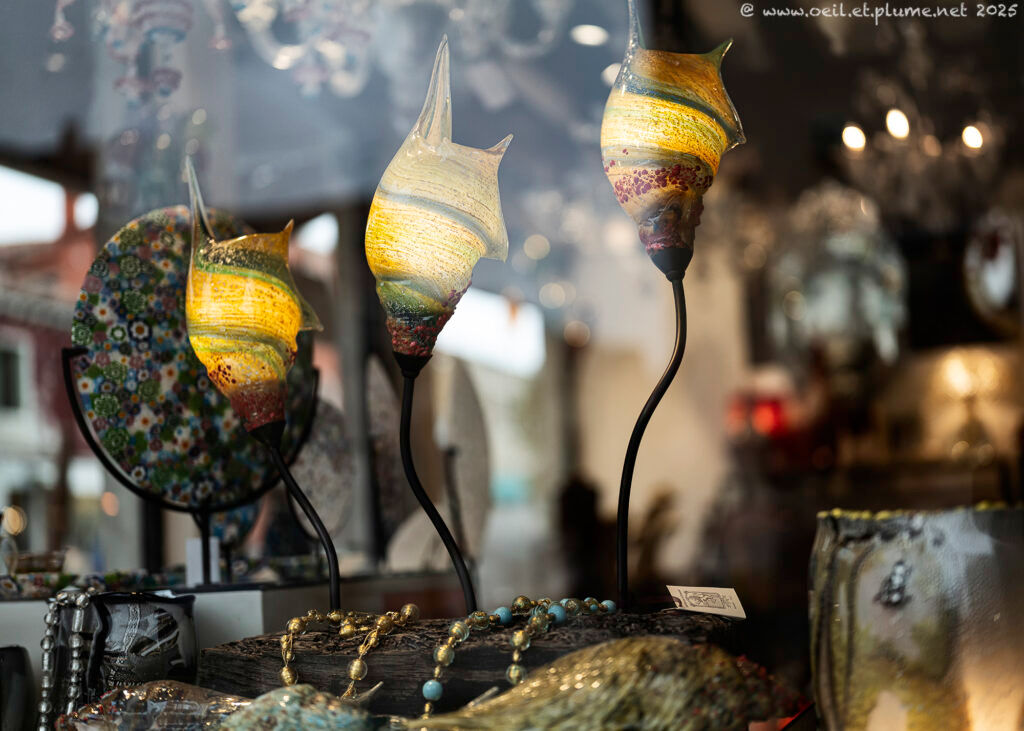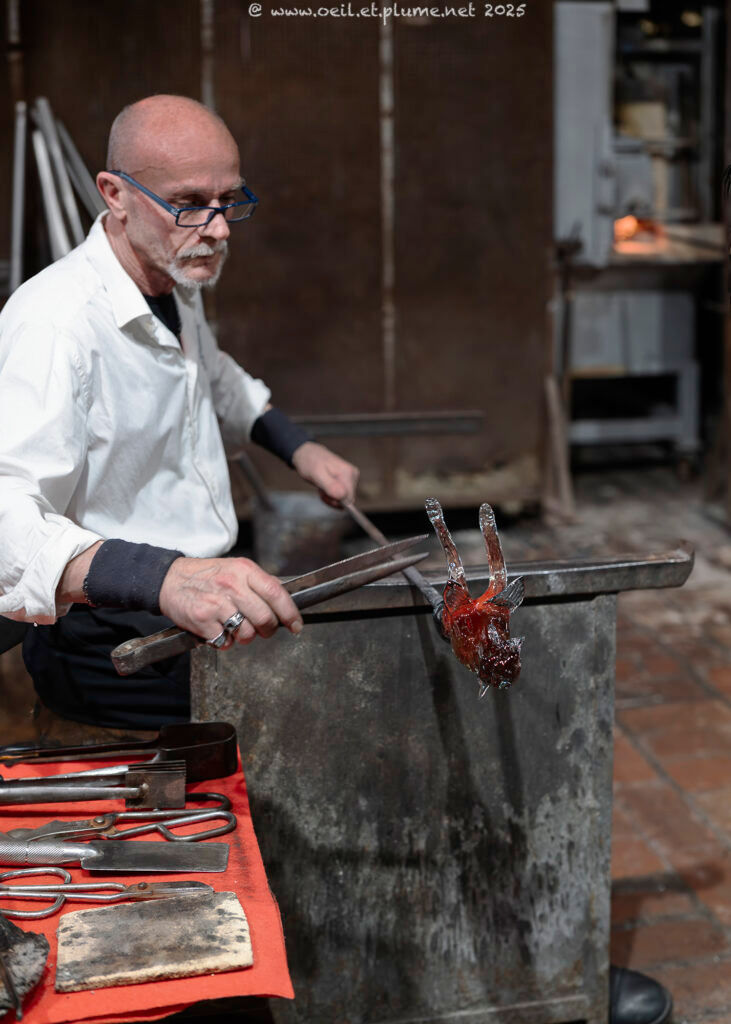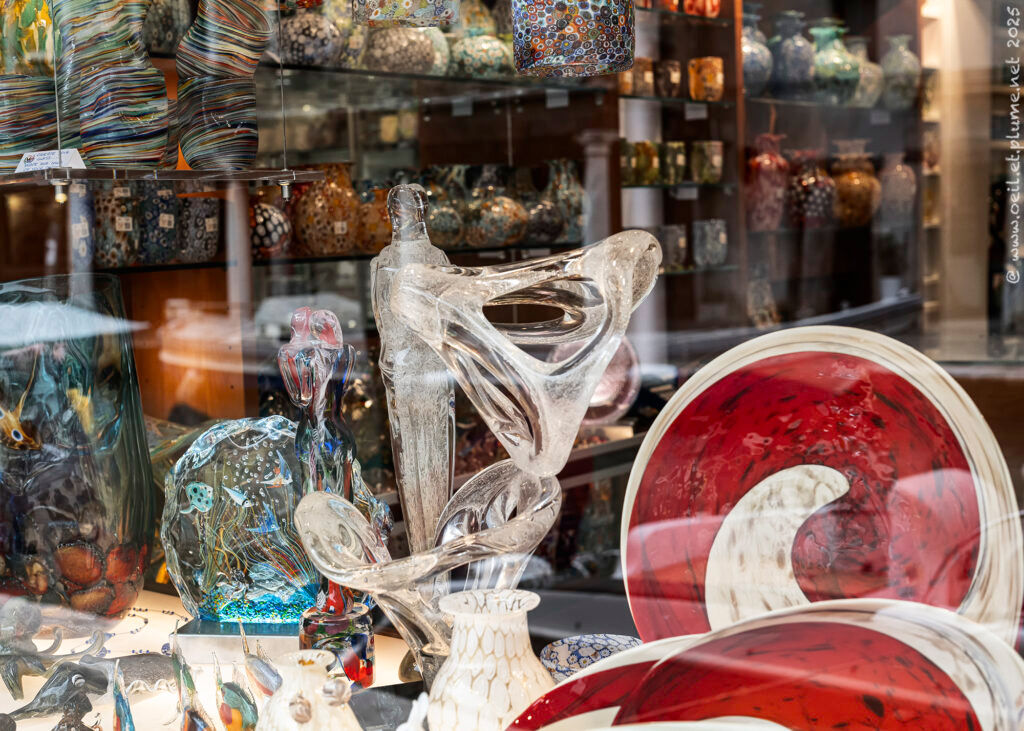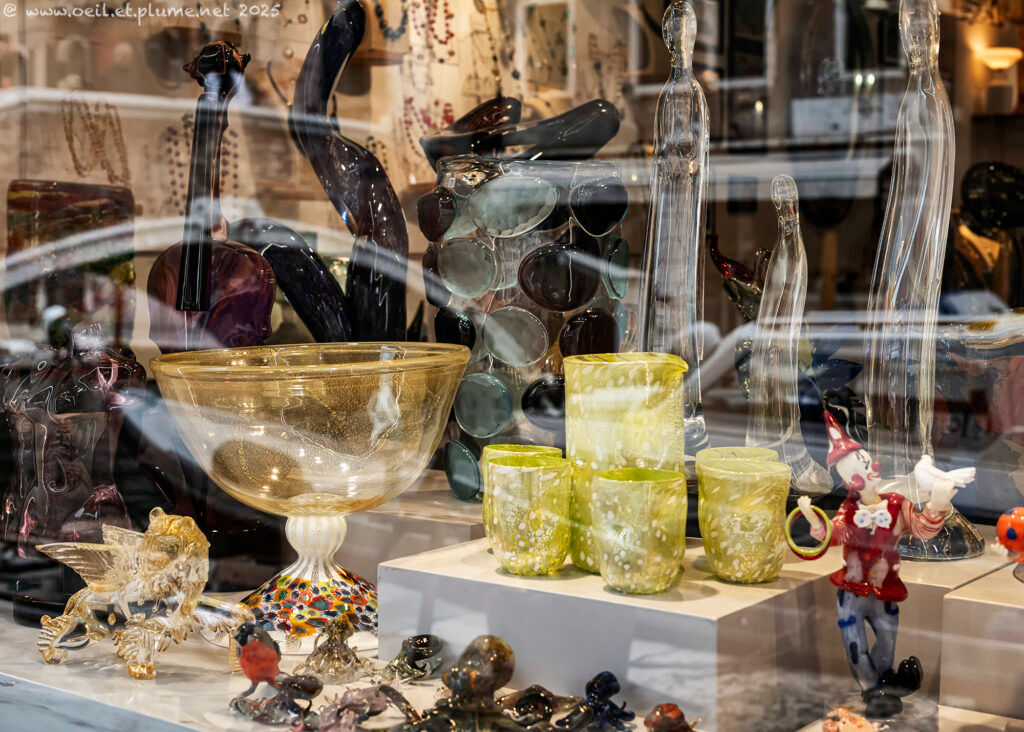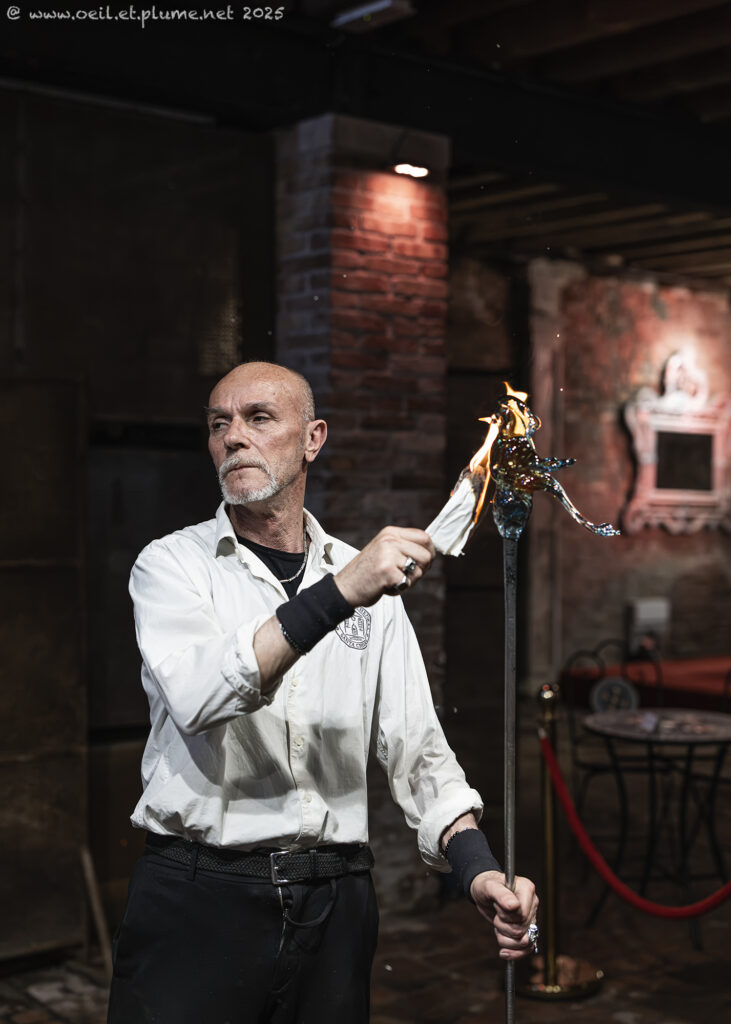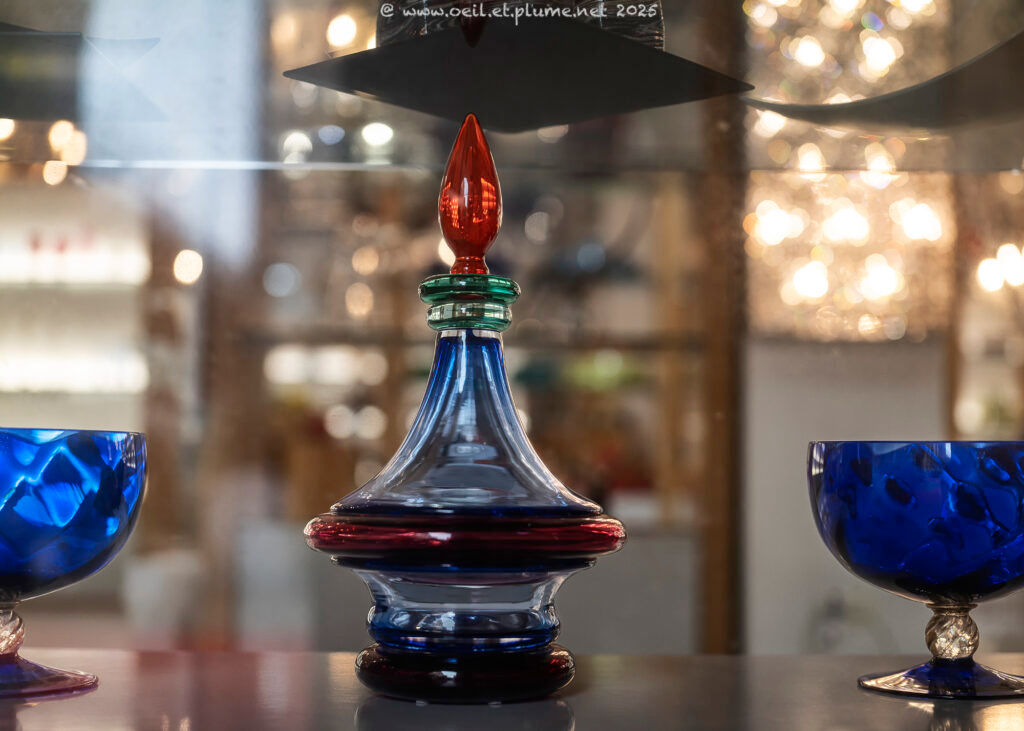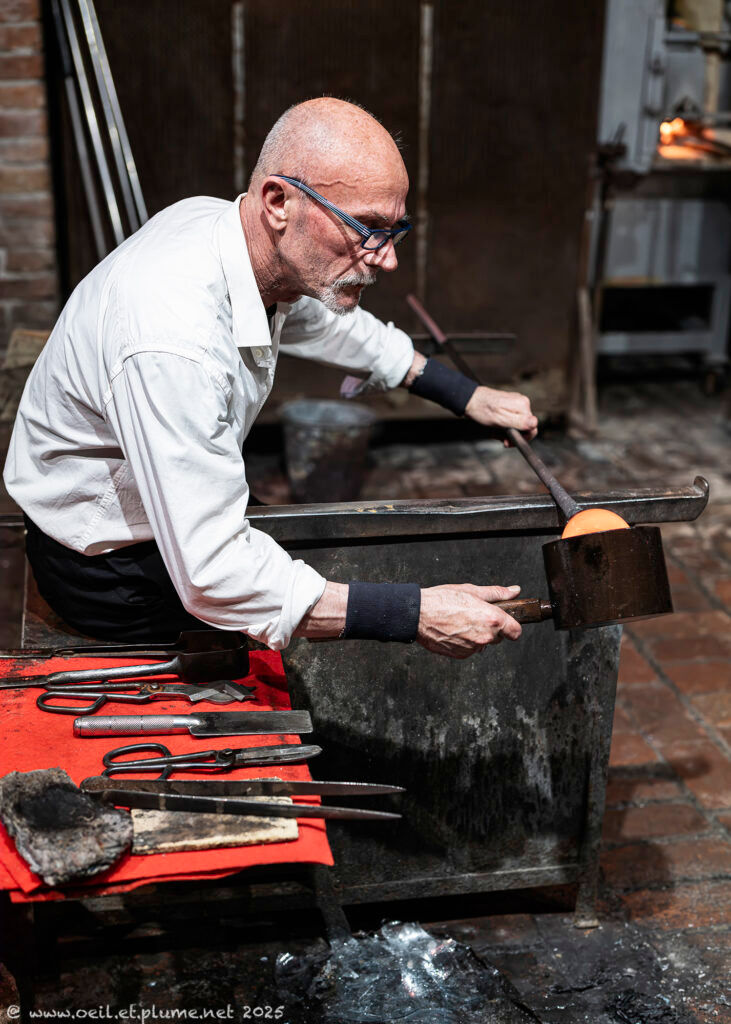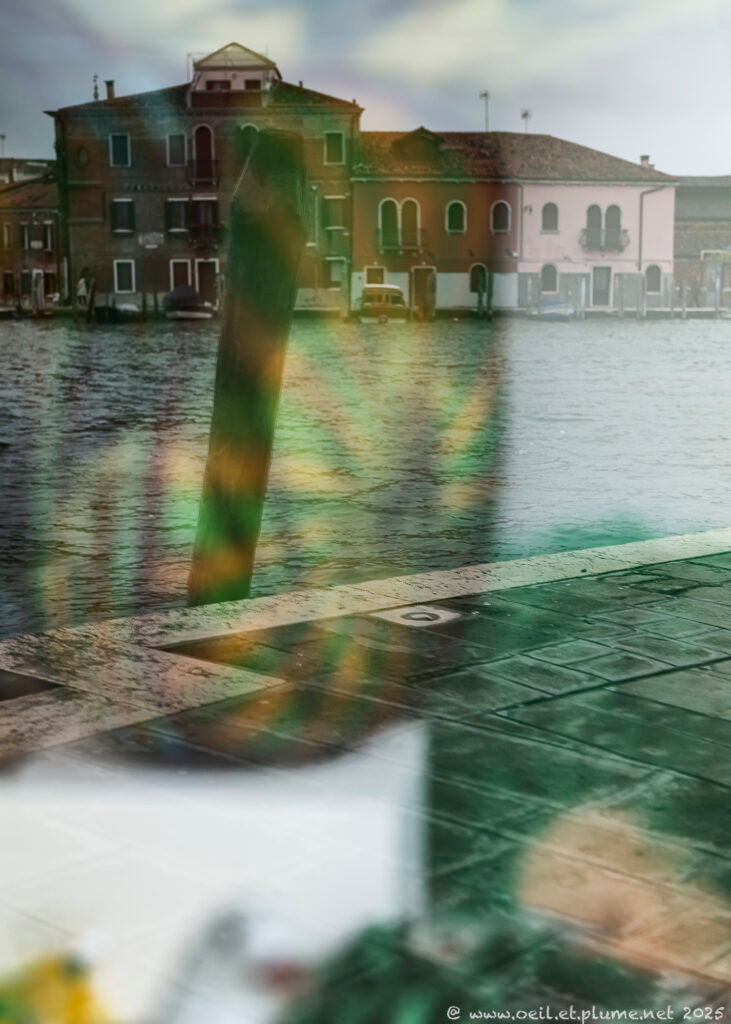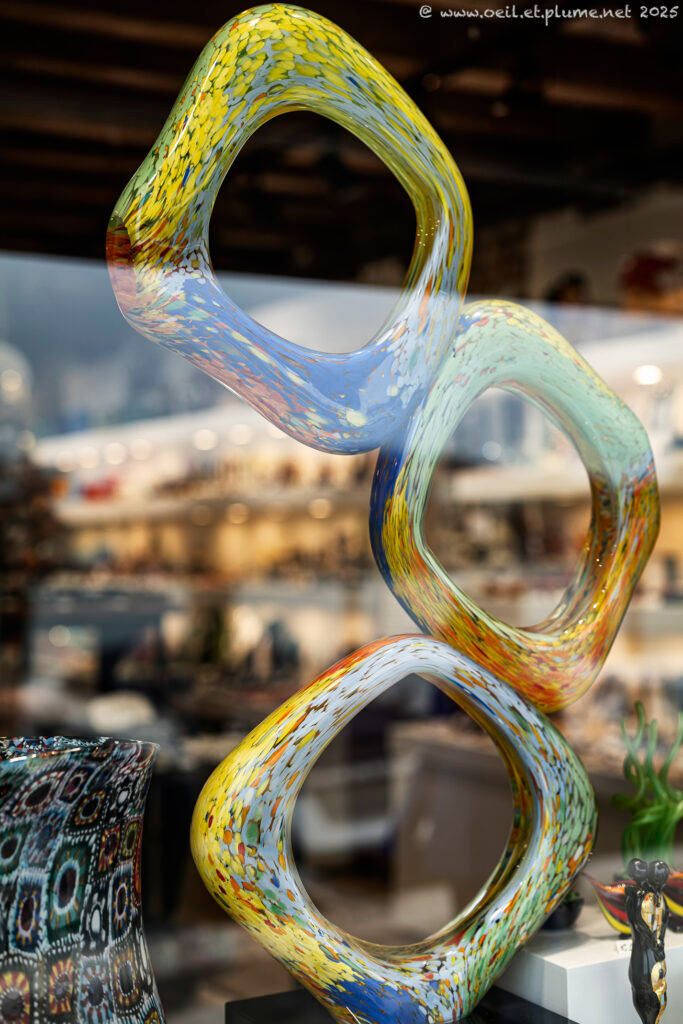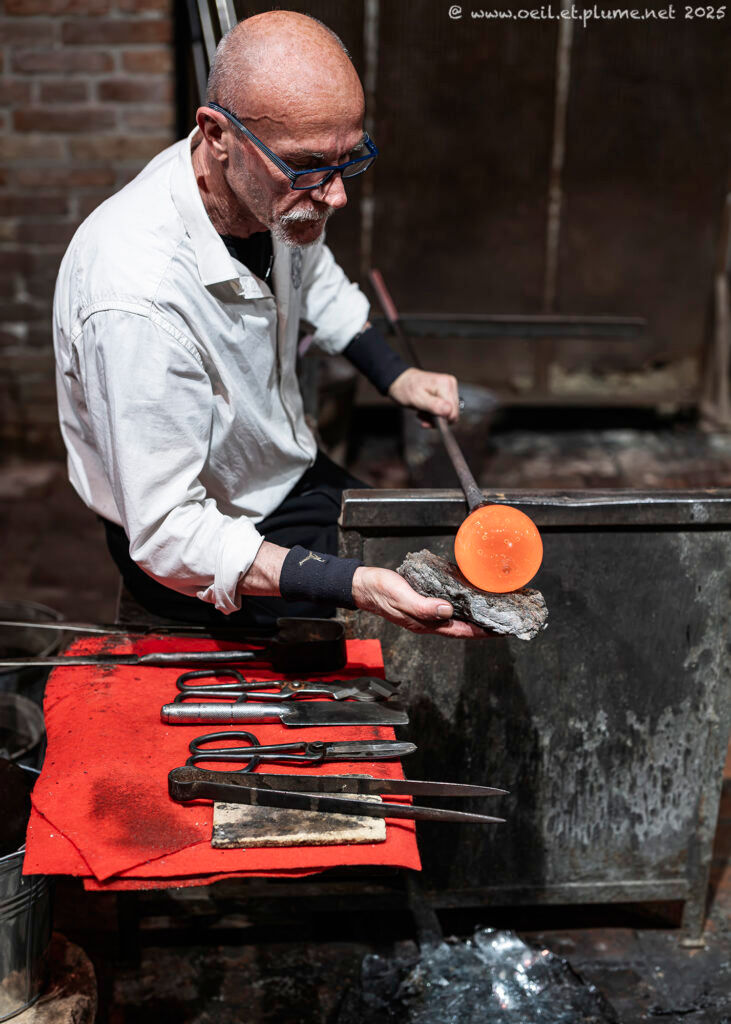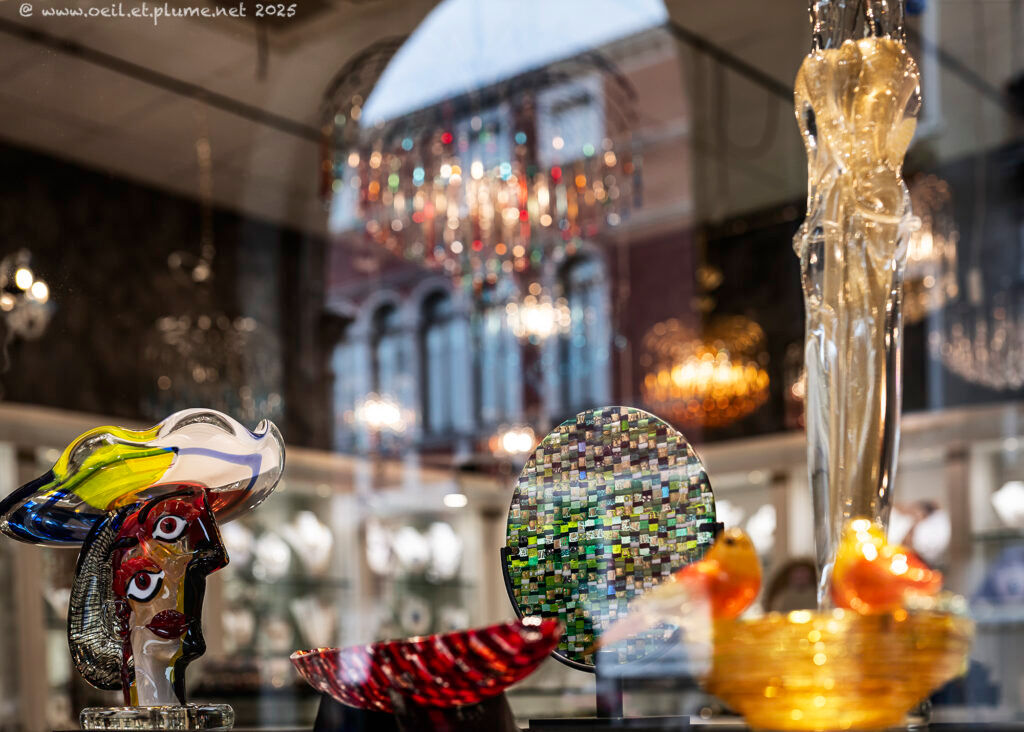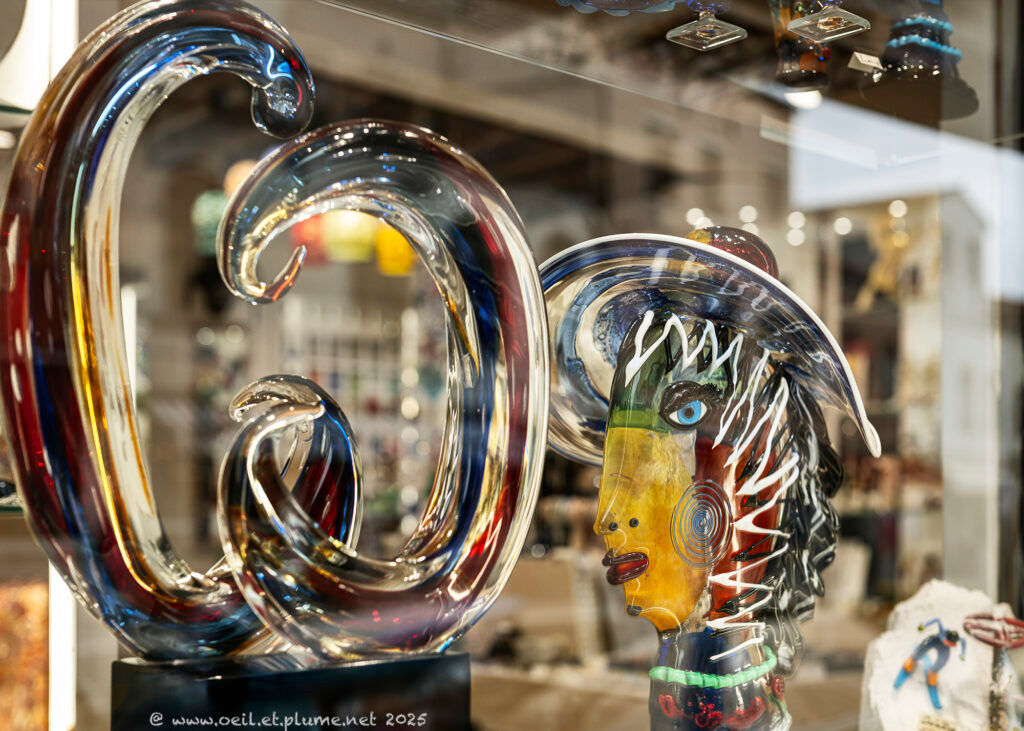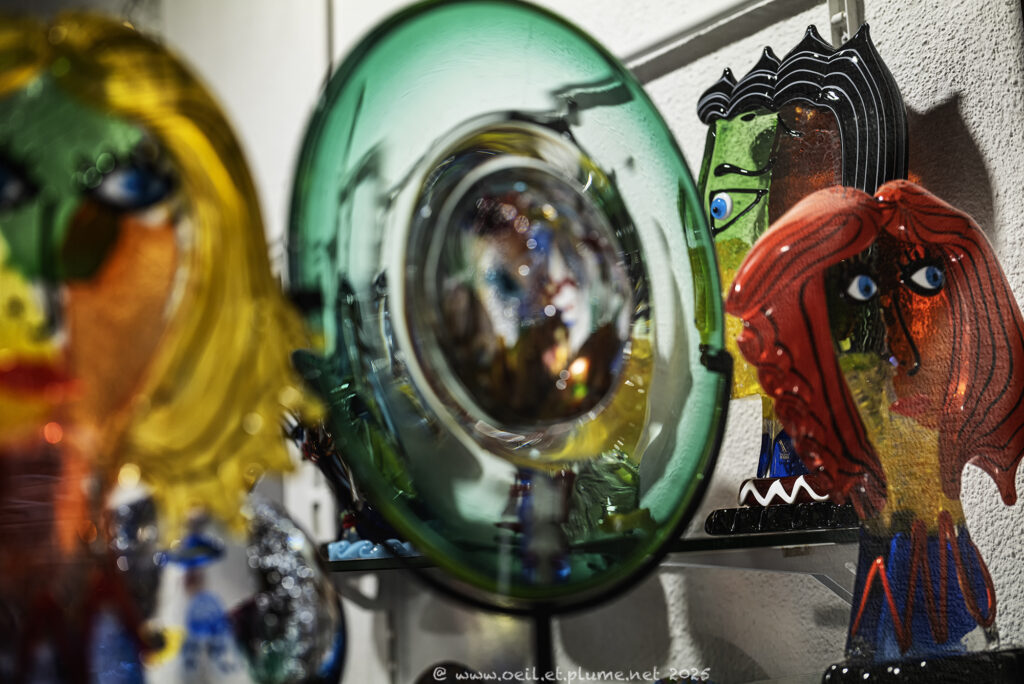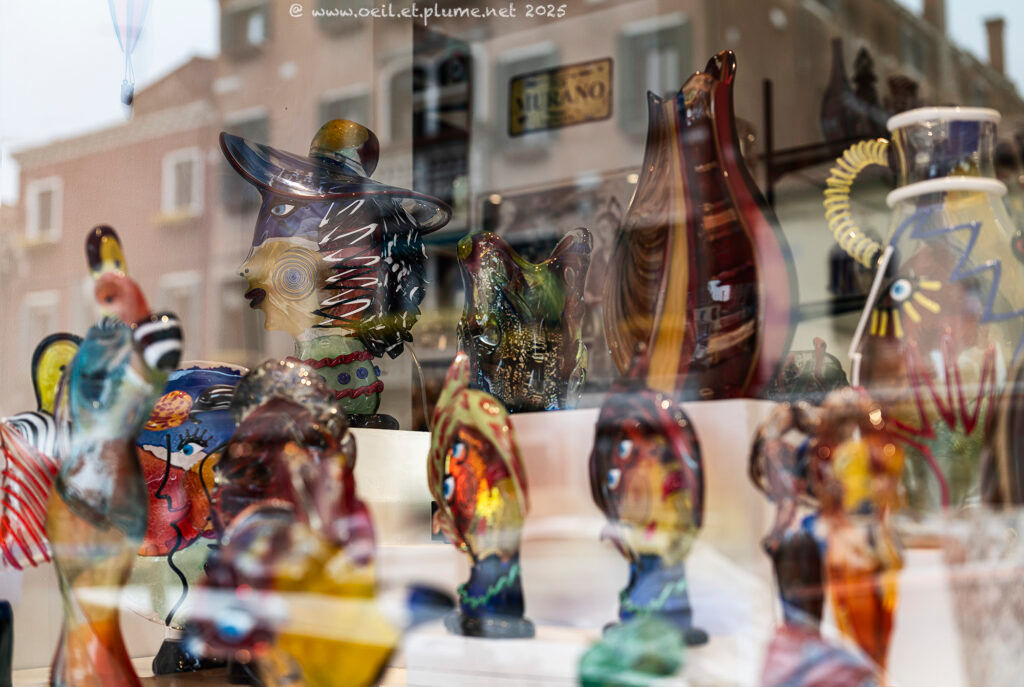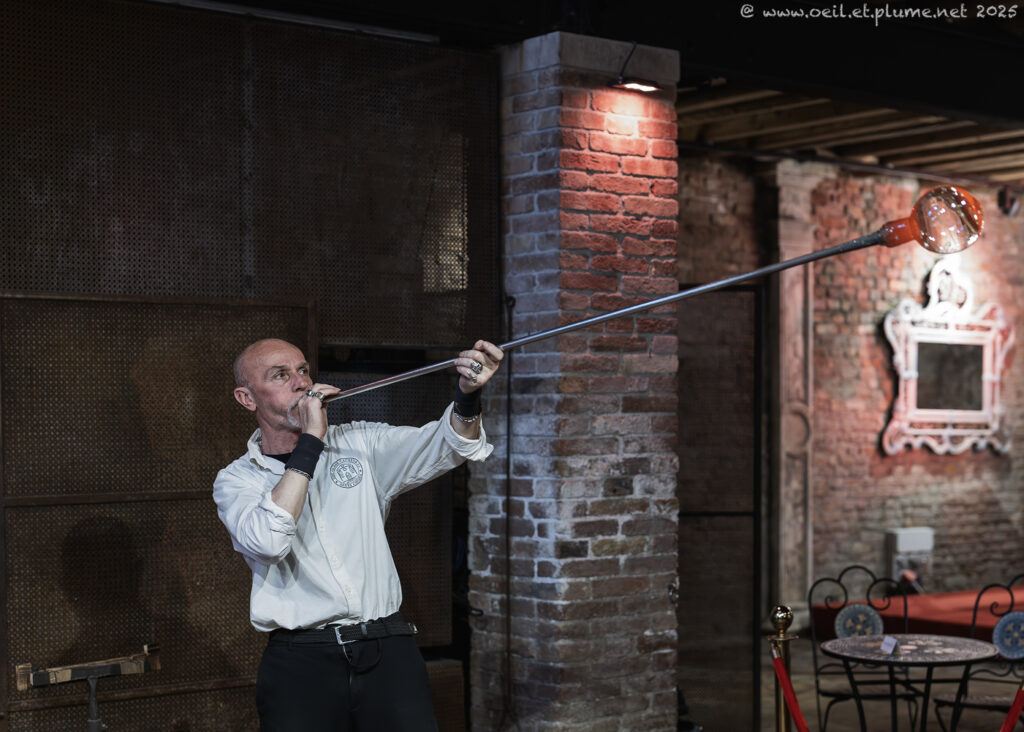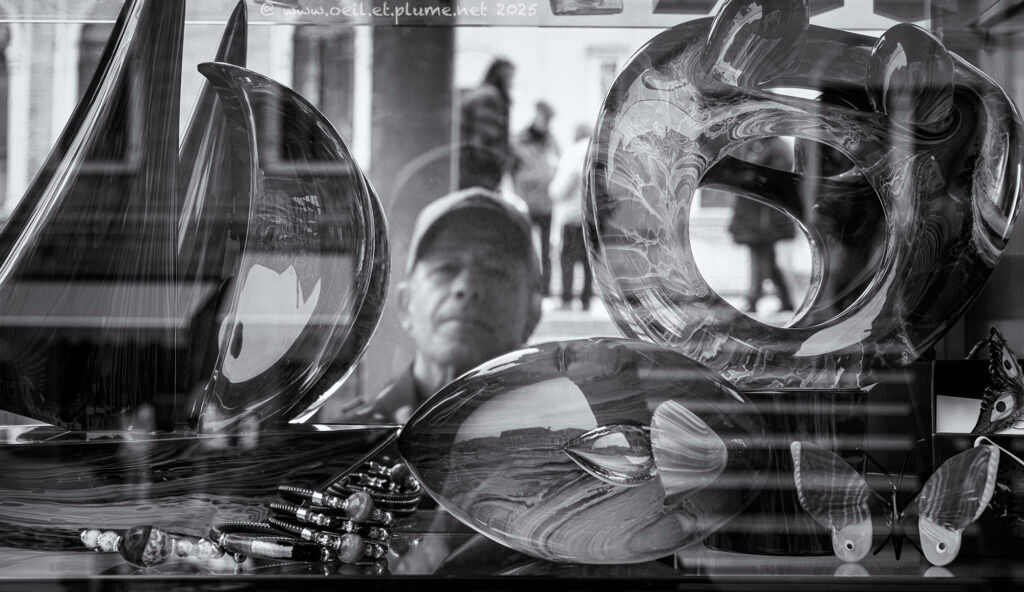As my previous post included pictures created exclusively indoor in Murano, the present essay explores the interaction between glass artwork and its geographical environment in the island. Murano island is charming with its traditional architecture as well as its multiple waterways bordered by pedestrian sidewalks.
I used the glass shop windows as a creative medium to connect indoor and outdoor scenes. The window glass reflects not only the artistic glassware inside, but also the surrounding architecture and passing people—or sometimes the reverse. The resulting images are often visually dense and ambiguous, yet artistically engaging, and at times even disorienting.
In parallel, your eyes will continue following our Murano’s glassmith at work while your mind will explore additional layers of Murano’s rich history.
Glassmaking in Venice dates back as early as the 8th century. In 1291, a local decree mandated the relocation of all glass factories to the island of Murano. The move served two purposes: to protect Venice from the devastating fires that frequently broke out in glass workshops, and to safeguard fine glass craftsmanship. During the same period, the local glassmakers’ guild issued strict professional rules to preserve their glassmaking secrets.
Murano’s glassmakers held a privileged social status on the island. They enjoyed immunity from legal prosecution by the Venetian state and were permitted to marry their daughters into Venice’s nobility—an exceptional right. While glassmaking itself was an almost exclusively male profession, local women often contributed by painting and decorating the finished pieces.
In return for their privileges, Murano’s glassmakers were bound by strict corporatist rules. They were forbidden to share their craft’s secrets or to leave the Venetian Republic without permission. If a glassworker attempted to flee, he would be ordered to return; failure to comply could result in the imprisonment of his family—or, in extreme cases, assassination.
Despite the strict controls, fierce local competition and other pressures led some Murano glassmakers to leave the island, establishing furnaces in nearby cities and abroad. This early form of brain and hand drain contributed to Murano’s economic decline, which began in the 17th century. Murano glass making revived in the 1920s notwithstanding new challenges.
Today, Murano’s glassmakers face growing pressure from international competitors. To protect the authenticity of their craft, the island’s main glass factories introduced a Murano trademark in the 1990s. More recently, each genuine Murano glass piece is also accompanied by a unique digital certificate—a non-fungible token or NFT—secured on a blockchain, ensuring its provenance and protecting it from counterfeiting.
Murano’s glassmaking tradition also faces internal challenges. The work is physically demanding and takes place within an very competitive market. Unlike in the past, the children of glassmakers no longer enjoy special privileges, financial security, or social elevation through marriage into the nobility. As a result, attracting young people to the craft has become difficult.
Murano’s glass artwork does speak to my soul and my eyes. Hopefully it will continue mesmerising future generations of art lovers.
Cheers,
